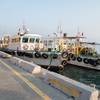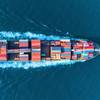ABS has released the first Guidance Notes on Ergonomic Design of Navigation Bridges, a notable new addition to its suite of practical guides that address the role of human factors within marine safety.
“We recognize that the vast majority of shipping accidents involving collisions and groundings stem from activities on the navigation bridge,” says ABS Manager of Safety Assessment & Human Factors Denise McCafferty. “When bridge activities rely on interfaces that are awkward for the mariner, human errors relating to judgment and vessel control can occur.”
The new Guidance Notes build upon ABS’ pioneering work from its 1998 Guidance Notes on the Application of Ergonomics to Marine Systems. This latest addition provides practical criteria for the effective ergonomic design and layout of interfaces located within the navigational bridge area. The criteria includes general ergonomic design guidance for navigational bridges, specific bridge design guidance, incorporating information from international sources such as the International Maritime Organization (IMO), and a process to identify individual vessel bridge requirements to guide the application of ergonomic design principles.
In an effort to reduce the potential for human error, the criteria is aimed at providing designers and engineers with practical guidance and work processes to use from the concept stage for effective integration of ergonomics and engineering.
Effective ergonomic design and layout integrates personnel with systems and their interfaces. For instance, human-system interfaces include: controls, displays, alarms, video-display units, computer workstations, labels, and overall workspace arrangement. McCafferty stresses that without consideration of personnel during design, interfaces may not meet the needs and expectations of personnel and human errors may result.
“The positive reception we have had from industry to our human factors engineering (HFE) work can be attributed to the manner in which we have developed industry-specific, internationally applicable, ergonomic principles and criteria,” says McCafferty. “By targeting guidance to the specific area of a vessel where mariners exert the greatest influence over operations and safety, the potential for reducing human error is magnified.”
The ABS Safety Assessment & Human Factors Group considers the release of this document part of an holistic approach it is taking toward human interactions at the design stage of a vessel or offshore installation. “Our goal is to use HFE to significantly improve personnel performance and safety while reducing the potential for human error,” says McCafferty.
Sponsored Content
Anschuetz USA: Supporting the U.S. Maritime Industry

Maritime leaders unite to tackle ocean plastic with launch of new alliance: the Maritime Association for Clean Seas

Featured videos

Anschütz USA Opens

St. Johns Shipbuilding Shaped to Capture Government Shipbuilding Jobs

EBDG Expands into the Research Vessel Sector
December 2025
 Read the Magazine
Read the Magazine

 Read the Magazine
Read the Magazine
This issue sponsored by:

Sunken Cargo Ship in the Pacific Highlights Need for Reliable Marine Insurance
Subscribe for
Maritime Reporter E-News
Maritime Reporter E-News is the maritime industry's largest circulation and most authoritative ENews Service, delivered to your Email five times per week








